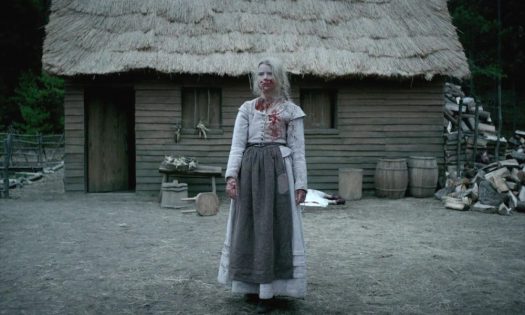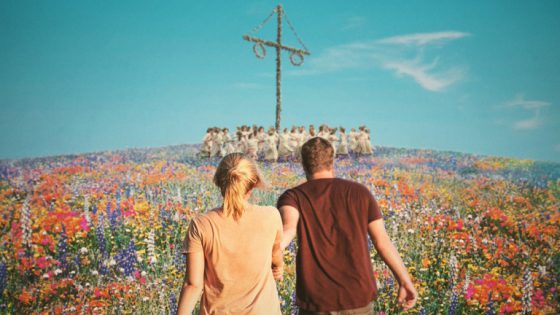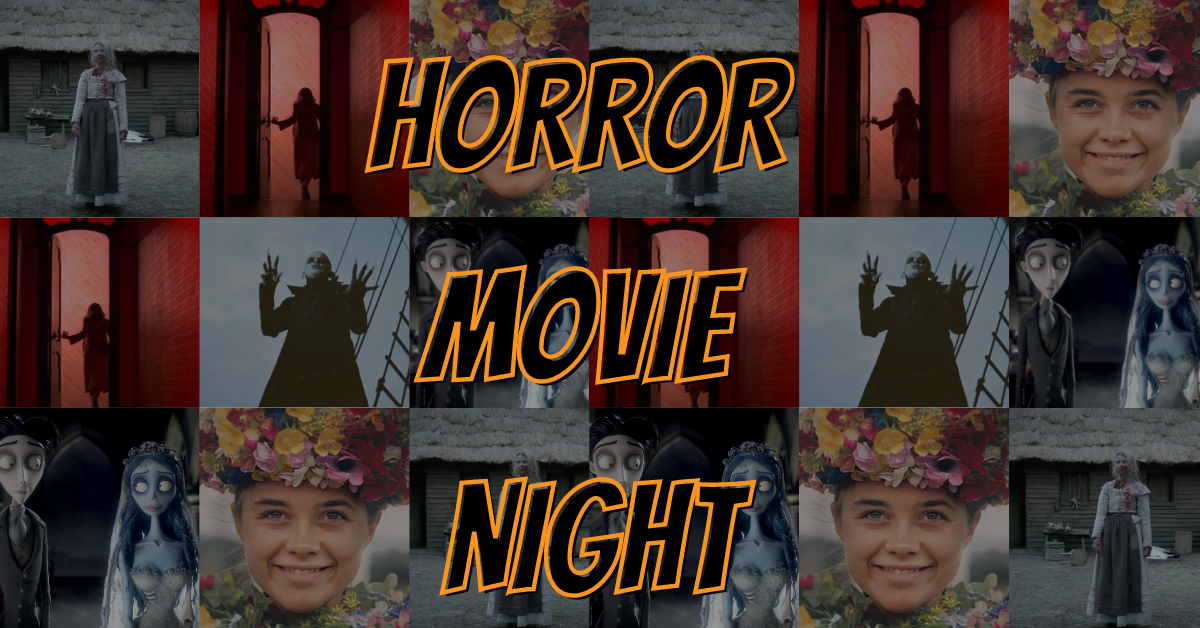Halloween is just around the corner: the ancient Celtic festival of Samhain, which celebrated the end of the summer and the beginning of the cold, dark winter, was also believed to be a time when the ghosts of the dead would come back to visit the livings.
Today the 31st October still coincides with a phase of transition: the first hints of autumn turn into the colder temperatures of November; the time change officially decrees the shortening of the days, and, for those living north of the equator, it usually leads to the final decision to kick the heaviest coat out of the wardrobe and dust off the warmest clothes. Not so horror, huh?
Halloween marks this cyclical passage of time every year, and even if you don’t believe in spirits and ghosts, why not prepare for the winter mood with some treats, a blanket, and a good horror film with a dark and spooky atmosphere? Whether you watch it with your cat, alone or in good company, or in between parties, here is a list of the top 5 films to watch this Halloween (and why not, even afterward).
NOSFERATU THE VAMPYRE

Let’s start with a classic, or rather two: that of the vampire par excellence, Count Dracula, but also a classic of the history of cinema, because Nosferatu The Vampyre (original title: Nosferatu. Phantom der Nacht) directed by German director Werner Herzog in 1979, is certainly one of the most praised horror films of all time. In fact, it is a remake of Murnau’s Nosferatu, one of the cornerstones of German expressionist and silent cinema. The version by the eclectic Herzog, as well as being a tribute to the work of his predecessor, is based directly on Bram Stoker’s novel, thanks also to the expiration of the copyrights that had caused Murnau more than a few problems.
The cast includes names such as Klaus Kinski, Isabelle Adjani and Bruno Ganz in the lead roles. Estate agent Jonathan Harker travels to Transylvania to sign a deal with the mysterious Count Dracula, to then discover – too late – that he’s a vampire. Dracula travels to Germany, sowing death and fear along the way, to reach the town of Wismar, home to Lucy, Jonathan’s young and beautiful wife, who decides to sacrifice herself and offer her blood in exchange for freeing the town from death.
Full of exquisitely Gothic elements, from the locations to the costumes, and permeated by melodramatic and sensual elements that enrich the narrative, Nosferatu gives a new depth, and a new perspective, to the figure of the vampire, who is seen as a complex figure, tormented by suffering and the desire to be loved.
SUSPIRIA

Dario Argento has been one of the pioneers of the horror genre in Italy, and one of the most prolific directors of the genre. Suspiria, made in 1977, is the first chapter of a trilogy the director refers to as “The Three Mothers”, which also includes Inferno and The Third Mother. Partly inspired by English writer Thomas De Quincey’s essay “Suspiria De Profundis”, Suspiria is a supernatural horror film that mixes elements of black magic and occultism with dark references to children’s fairy tales.
In the gothic setting of Freiburg, Bavaria, and of the Black Forest, a prestigious dance academy turns out to be a front for a coven of witches, as the unsuspecting protagonist, ballet dancer Suzy, discovers to her cost. With an almost all-female cast, Argento winks at the links between women and witchcraft, but also at occult practices and the mysteries that lie behind power and rationality. With the use of ad hoc film and sound recording techniques, and minimal use of special effects in post-production, the film manages to create a fairytale – or nightmare – atmosphere with very accentuated and vivid colours, and a feeling of proximity to the protagonists, which will capture you in a labyrinth of hidden doors and corridors and make your ears extremely susceptible to any sighs, at least momentarily. Hopefully.
CORPSE BRIDE

Tim Burton is widely recognized as the one who unhinged the gothic imagery, making it at the same time exquisitely tender and accessible to all. Starting with Nightmare Before Christmas (produced by Burton, but directed by Henry Selick) with the character of Jack Skeleton having become one of the most popular in the world, Burton has created a gothic universe of his kind, which cannot be defined unilaterally as horror!
Corpse Bride takes us back to the gothic setting par excellence: a Victorian-era village in England, where the marriage between young Victor and Victoria (sic!) is compromised, as the film’s logline states, by a “grave misunderstanding”, and clumsy Victor finds himself engaged with the ghost of Emily, a young bride murdered years before on the night of her elopement. In a series of twists and turns, Victor searches for a way to solve the trouble he has gotten himself into, while Emily seeks revenge for the wrong she has suffered. Corpse Bride is a perfect film for those who aren’t fans of horror or scare jumps, and it’s also perfect for children. But beware: tears are just around the corner.
THE WITCH

Set in 1930s New England, Robert Eggers’ 2015 feature directorial debut The Witch stars a Puritan family struggling with superstition and misogyny. When their newborn son mysteriously disappears while in the care of their eldest daughter Thomasin, and a series of disturbing events begin to take place within the family, it is the young woman who is singled out and accused of being a witch.
Eggers mixes recognizable elements of horror imagery with a well-defined historical and environmental context, showing how religion, fear, and superstition are all part of the same instrument of control and oppression of individual freedom. The Witch is a film full of suspense and mystery, the right film to immerse yourself in for anyone who loves thrillers and psychological horror, but doesn’t disdain period dramas.
MIDSOMMAR

Like his colleague Eggers, Ari Aster, director and writer of Midsommar, belongs to the latest wave of horror filmmakers who have helped bring the genre to the attention of critics and audiences alike, thanks to an elegant and seductive visual style that is light years away from that of the ‘craft’ productions of the 1970s. The ‘Midsummer’ of the title refers to the annual Swedish celebration of the same name, also one of the festivals that marked the passage of the seasons in the Celtic calendar – just like Halloween.
Aster reinterprets it in a horror key, taking elements from local folklore: in the film, the protagonist Dani follows her boyfriend Christian, an anthropology student, and a group of friends to Sweden, where they have been invited to participate in a Midsummer celebration in an ancestral commune. Soon, however, the situation takes an unexpected turn, and they discover thatthe dynamics and traditions that govern the village are much more ambiguous and unsetting than what they could have imagined. In Midsommar, Aster draws on some of the tropes of 80s horror films, with a collective protagonist being decimated by a mysterious evil force, and creates a more constructed and psychologically complex narrative.
Midsommar will give you chills in the sunlight – in fact, it is perhaps the only horror film not to have any scenes shot at night, thanks to the phenomenon of the midnight sun.
Whether you prefer classic gothic horror, a chilling thriller, or the latest slasher, we wish you a good Horror Halloween and a happy transition into the long winter!
Written by Benedetta Mastronardi



